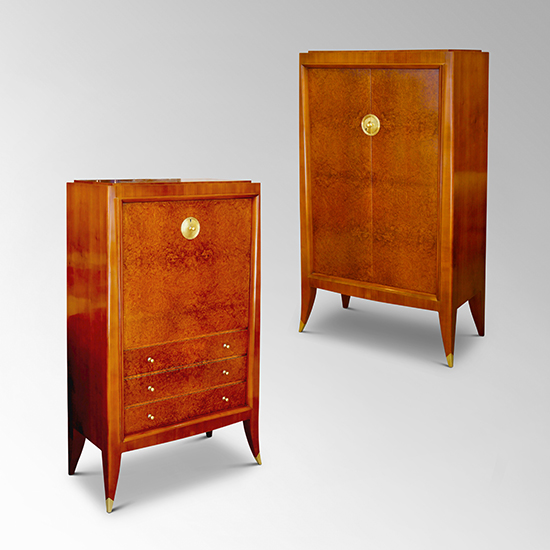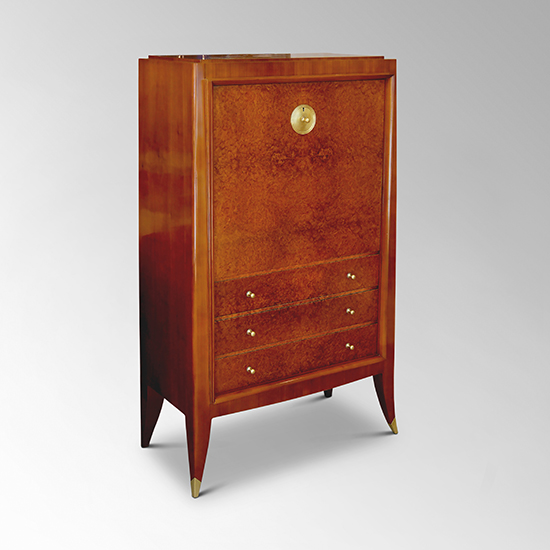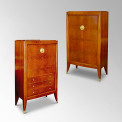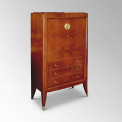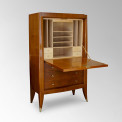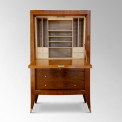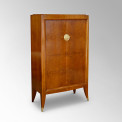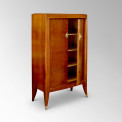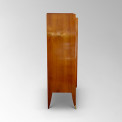Secretaire and cabinet by Alfred Porteneuve
Secretaire with three drawers
Cabinet with two doors
Fruit wood (likely cherry)
Amboyna (burl walnut)
Brass pulls and sabots
France, 1940s
Dimensions
55.5 in. (141 cm) H
32 in. (81 cm) W
17.5 in. (44 cm) D
|
This extraordinary duo of cabinets (one a secretaire with drawers, the other a storage cupboard) in fruitwood (likely cherry) and amboyna (burl walnut) is very much representative of Alfred Porteneuve’s particular talent for creating luxurious and highly considered furnishings that somehow never seem fussy or mired in their time.
If he had been any less of a talent in his own right, Alfred Porteneuve (1869-1949) would have easily had his whole career eclipsed by his collaborations with his uncle, the eminent Art Deco master Émile-Jacques Ruhlmann. Nephew Alfred joined the office shortly after having studied architecture at the Ecole des Beaux Arts and quickly became an integral presence, planning interior design projects and overseeing national and international exhibition designs, including the iconic interiors of L’Hôtel du Collectionneur pavilion at the 1925 Paris Exposition. After Ruhlmann passed away in 1933, Porteneuve oversaw the closing of the firm according to his uncle’s wishes, then setting up his own workshop. Like his mentor, Porteneuve had an elegant style, but more relaxed in keeping with the times, often in lighter woods, such as fruitwood, and often including metal and lacquer surfaces. He received numerous public and private commissions into the 1940s, including the interiors for the ocean liner Pasteur in 1939. |
SECRETAIRE SPECS (PDF)
CABINET SPECS (PDF)
INQUIRE
VIEW SECRETAIRE IN INVENTORY
VIEW CABINET IN INVENTORY
